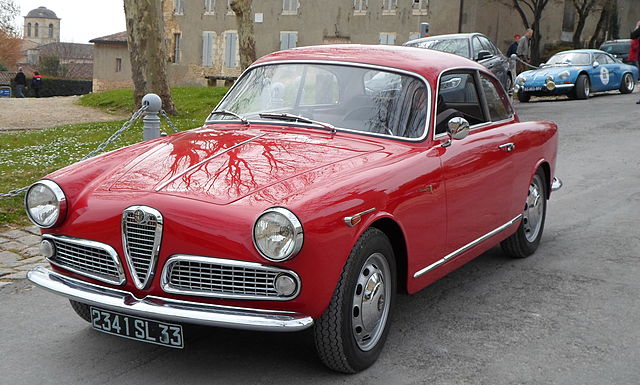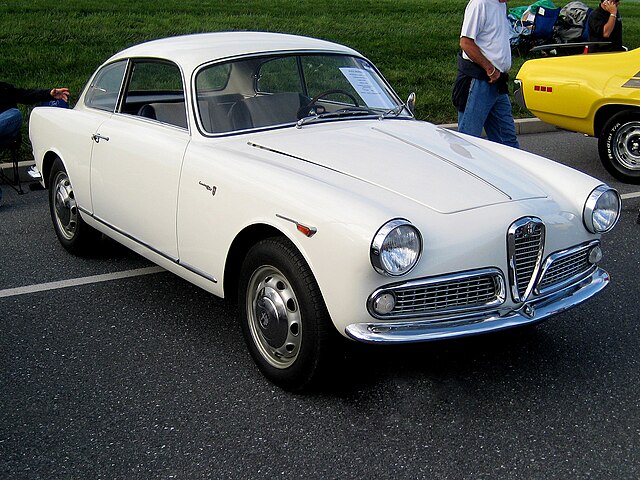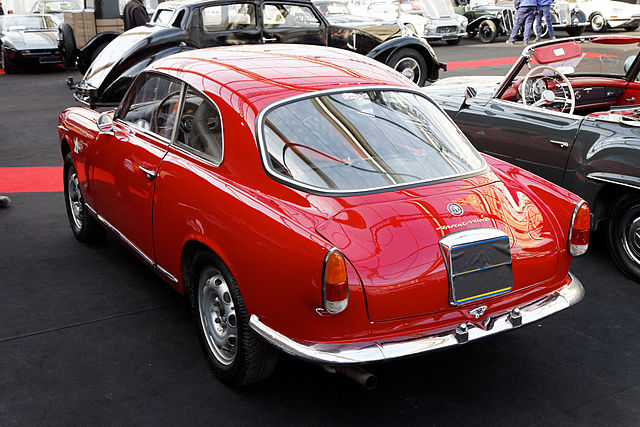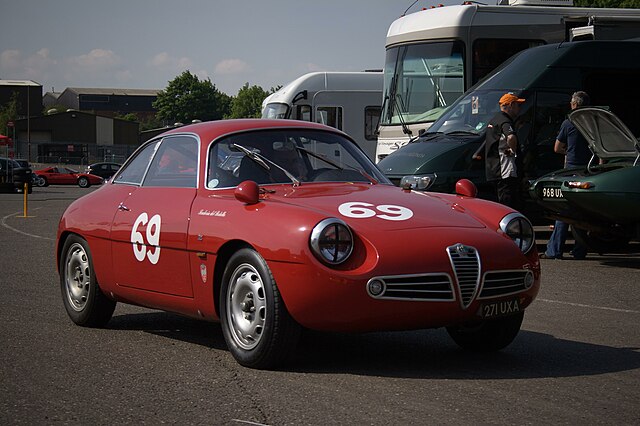
The Alfa Romeo Giulietta Sprint, produced between 1954 and 1965, is a hallmark in the annals of automotive history, embodying elegance, performance, and innovation. This iconic vehicle, designed by Franco Scaglione for Bertone, was not just a car but a masterpiece that reflected the very essence of Italian craftsmanship and automotive engineering of its time.
Its legacy is not just limited to its technical prowess but also in setting a benchmark for design aesthetics that influenced generations of automobiles.
Genesis of a Legend

The Giulietta Sprint was conceived in a post-war era, a time when the automotive industry sought not only to recover but to revolutionize. Alfa Romeo, with its rich racing pedigree, aimed to introduce a vehicle that combined performance with affordability, thereby making sports cars accessible to a broader audience. The Giulietta model line, including the Sprint, was Alfa Romeo’s answer to this demand.
The introduction of the Giulietta Sprint in 1954 was a watershed moment for Alfa Romeo. The car was unveiled at the Turin Motor Show, capturing the imaginations of car enthusiasts and prospective buyers alike. Its sleek design, coupled with its impressive performance metrics, set the stage for what would become one of the most beloved models in the Alfa Romeo lineup.
The Sprint was powered by a 1.3-liter four-cylinder engine, which was innovative for its time, featuring an aluminum alloy cylinder block and twin camshafts. This engine not only provided excellent performance but also showcased Alfa Romeo’s engineering capabilities, combining efficiency with the ability to produce a thrilling driving experience.
Design and Aesthetics

The design of the Giulietta Sprint was a collaboration between Alfa Romeo and the renowned styling house Bertone, with Franco Scaglione leading the design efforts. The result was a vehicle that epitomized the Italian design philosophy of ‘form follows function’. Its body was not just about aesthetics; every curve and line was calculated to enhance aerodynamic efficiency.
The interior of the Giulietta Sprint was a blend of luxury and simplicity, with a focus on driver comfort and ergonomics. The dashboard was elegantly designed, housing the essential instruments and controls within easy reach of the driver, while the seats were crafted to provide support and comfort even during long drives.
The Giulietta Sprint’s exterior was characterized by its long hood, rounded curves, and distinctive front grille. These elements not only contributed to its aerodynamic efficiency but also gave the car a timeless elegance. The vehicle’s design was so well-received that it remained largely unchanged throughout its production run, a testament to its initial perfection.
Performance and Engineering

Under the hood, the Giulietta Sprint boasted an all-aluminum, 1.3-liter twin-cam four-cylinder engine, which was a marvel of engineering at the time. This power unit was capable of producing up to 80 horsepower, enabling the car to achieve top speeds that were impressive for its class and era.
The engineering prowess of Alfa Romeo was evident in the Giulietta Sprint’s performance features, including its sophisticated suspension system. The front utilized an independent suspension with coil springs, while the rear had a solid axle with trailing arms and coil springs, providing excellent handling and stability.
Moreover, the Giulietta Sprint was equipped with drum brakes all around, which were standard for the time but were engineered to provide superior stopping power. This combination of performance, handling, and braking capabilities made the Giulietta Sprint not only a pleasure to drive but also a competitive vehicle in motorsports.
Motorsport Legacy

The Giulietta Sprint quickly made its mark in the world of motorsport, showcasing its racing pedigree in various competitions across Europe. Its agility, coupled with its robust engine, made it a formidable competitor in rallies, hill climbs, and endurance races.
Alfa Romeo capitalized on the Giulietta Sprint’s success on the track by introducing the Sprint Veloce, a more performance-oriented version. This model featured engine and suspension upgrades, further cementing the Giulietta’s legacy in motorsports.
The Giulietta Sprint’s achievements in motorsport not only demonstrated its superior engineering and performance but also contributed to the brand’s prestige and appeal, enhancing its image as a manufacturer of high-performance vehicles.
Cultural Impact and Legacy
The Giulietta Sprint holds a special place in automotive history, not just as a vehicle but as a cultural icon. It epitomized the Italian passion for speed, beauty, and innovation, becoming a symbol of the post-war economic boom and the resurgence of the Italian automotive industry.
Today, the Giulietta Sprint is revered among collectors and enthusiasts for its beauty, performance, and historical significance. It represents a bygone era of automotive design and engineering, where aesthetics and performance blended seamlessly.
The Alfa Romeo Giulietta Sprint’s legacy is a testament to its impact on the automotive world. It paved the way for future generations of sports cars, combining performance with accessibility, and remains a benchmark for automotive excellence.
In conclusion, the Alfa Romeo Giulietta Sprint (1954 – 1965) is not just a car; it’s a piece of history. Its blend of design, performance, and innovation has left an indelible mark on the automotive landscape, celebrating the essence of Italian craftsmanship and engineering prowess.
